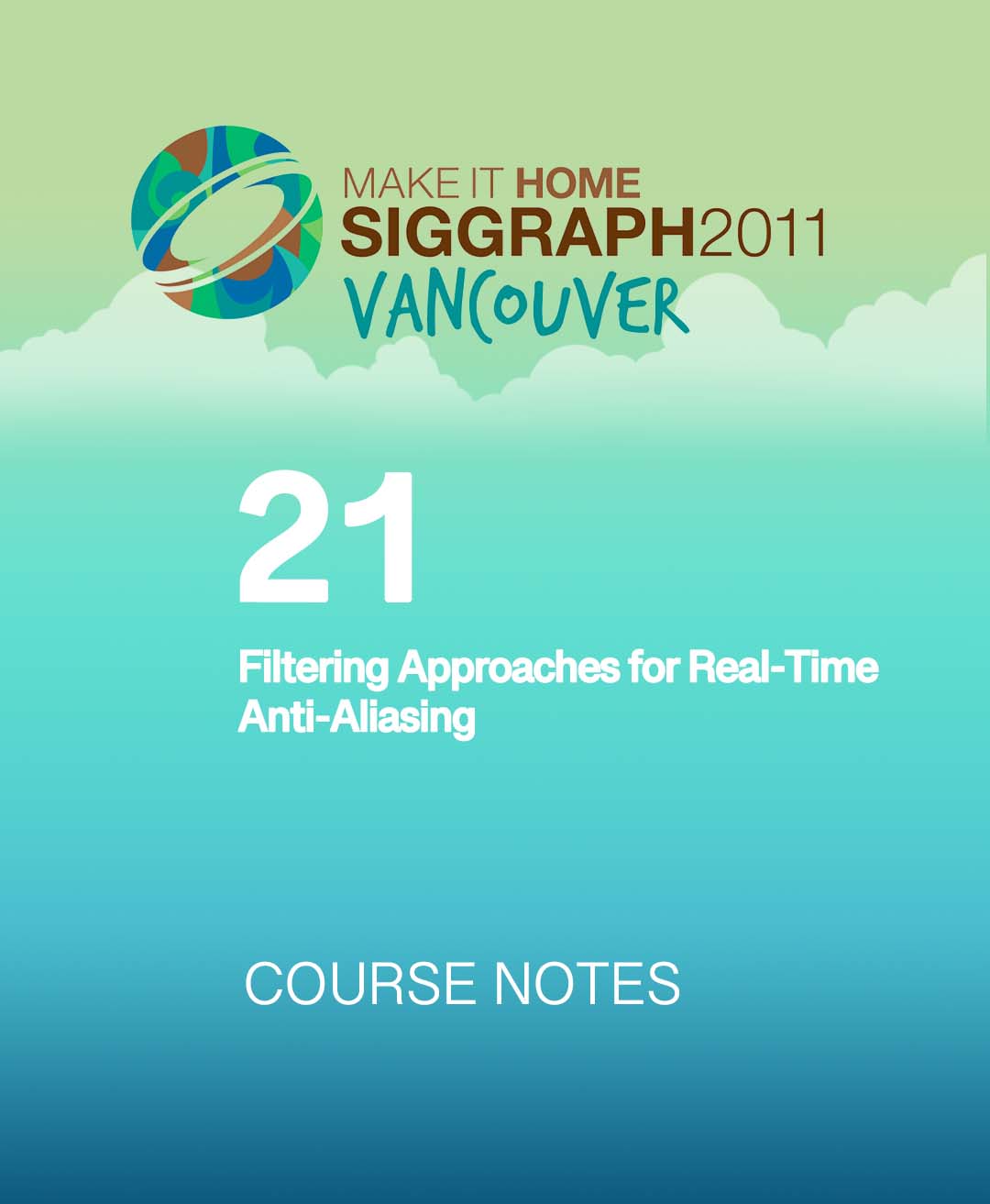“Filtering Approaches for Real-Time Anti-Aliasing” by Jimenez, Gutierrez, Yang, Reshetov, Demoreuille, et al. …
Conference:
Type(s):
Entry Number: 21
Title:
- Filtering Approaches for Real-Time Anti-Aliasing
Course Organizer(s):
Presenter(s)/Author(s):
Abstract:
Prerequisites
A general knowledge of graphics is advisable.
Who Should Attend
All attendees, from casual users who just want to better understand post-processing anti-aliasing techniques to researchers and game developers, for whom the course provides implementation details and code snippets to allow quick exploration of their own ideas in this explosively growing area.
Description
For more than a decade, supersample anti-aliasing (SSAA) and multisample anti-aliasing (MSAA) have been the gold-standard anti-aliasing solutions in games. However, these techniques are not well suited for deferred shading or fixed environments like the current generation of consoles. In recent years, industry and academia have been exploring alternative approaches, where anti-aliasing is performed as a post-processing step. The original, CPU-based morphological anti-aliasing (MLAA) method gave birth to an explosion of real-time anti-aliasing techniques that rival MSAA.
Most of these techniques share concepts and ideas, so the main goal of this course is to establish a conceptual link between them, identifying novelties and differences. The presenters explain how sub-pixel data can be used to improve quality and performance tradeoffs at post-processing steps, which is a cutting-edge research area today. The course includes an overview of both research and industry filter-based anti-aliasing techniques in games for all modern platforms (AMD and NVIDIA GPUs, PlayStation 3, and Xbox 360), low-level insight to ease adoption of these techniques and give attendees a complete concept-to-implementation roadmap, and deep quality, performance, and ease-of-integration comparisons of each technique.




